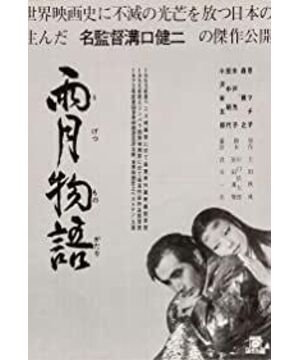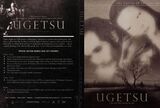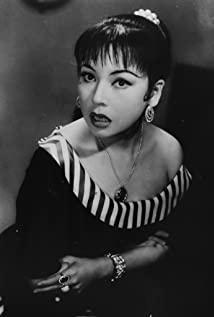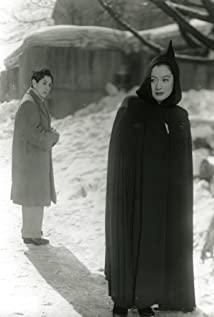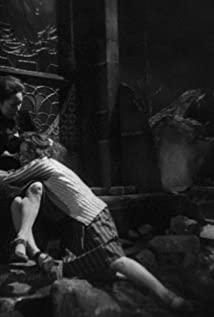Mizoguchi Kenji likes to use sports lenses to shoot "one scene, one shot". His shots often appear in the direction where the characters are looking up at a 45-degree angle. Later, after Xiaosi's explanation, we learned that it is a perfect profile of the innocence. Dead angle. In "Story of the Rainy Moon", Genjuro escaped the entanglement of ghosts and returned to his home. His family was surrounded by ruins. He walked around the house and returned to the room. The kang, which was originally empty, had already been raised. Fire, his wife was sitting by the side cooking, and the child was sleeping beside him. He was overjoyed. He picked up the child as usual, and reminisced with his wife by the kang. He drank two glasses of wine and lay down. Needle and thread to mend clothes, the sky is getting brighter and brighter from the leaking doors and windows. This group of shots is completed in one shot, and the time control is precise, which has been imitated by countless latecomers.
The next day, when the village chief came to his home, Genjuro realized that his wife had already died in the process of escaping. The emotions of the viewers erupted at this moment. The good wish of the heroine who was lucky enough to survive was completely broken, and the sad songs of the little people in the troubled times became a foregone conclusion.
Mizoguchi Kenji has a point of view. He believes that innovation does not necessarily require shooting new things. He insists on colliding with old and old things to innovate. His favorite and good genres are costume films and period dramas. The background of "The Story of the Rainy Moon" is Japan's Warring States period, "The Story of the Remnant Chrysanthemum" was the heyday of Kabuki performances, "The Story of the Remnant Chrysanthemum" was completed in 1939, and "The Story of the Rainy Night" was released in 1953. As a prolific filmmaker Before his death at the age of 58, Kenji Mizoguchi completed a total of 90 works. The most amazing thing is that he once made ten films a year. High production is not scary, what is scary is that many movies have become masterpieces in film history.
"Rainbow Story" is half of Liaozhai and half of "Seven Samurai". In terms of the realistic performance of the war, Akira Kurosawa's "Seven Samurai" obviously directly inherited Kenji Mizoguchi. If there are three super film masters in Japan, Kenji Mizoguchi is the one who excavates the beauty of the East from the depths of Japanese culture, Yasujiro Ozu is the refiner who presents the beauty of life on the contemporary timeline, Akira Kurosawa is Find a master of integration with Japanese traditional culture from the level of the world.
Mizoguchi Kenji's Oriental Beauty is a combination of female charm and oriental ethics in content. Under the lens of Mizoguchi Kenji, there are hardly any bad women. Even Miss Kuchiki, who is greedy for human love in "The Story of the Rainy Moon", was also killed by the war. The resentful spirit who died in vain without enjoying a day of love, one of the two wives is virtuous and tolerant, and the other is persistent and truthful. In "The Story of the Dead Chrysanthemum", Ade sacrificed himself in order to achieve the man he loved, Kikunosuke, and become a famous celebrity. Their beauty has made Kenji Mizoguchi's film beautiful. In terms of form, Mizoguchi Kenji's images have the typical beauty of "wabi-sabi". Japanese "wabi" means poverty, poverty, simplicity, prudence, restraint, coldness, thinness, withering, old age, loneliness, naivety, simplicity, darkness , quiet, wild, natural, unsanctified... A foreign reporter described his impression of Japan in this way: "The dark colors of the ancient trees, the moss on the stones, and even the edges of the scrolls worn by the touch of a pair of hands make them Fascinated. They call the imprints of these years 'wabi-sabi', which literally means rust. Then 'wabi-sabi' should refer to the rust of nature, the old charm, the imprint of time." Village houses, barren mountains and forests, misty rivers, ancient streets, ruins... There are many dilapidated landscapes of war or the rest of life in classic Japanese movies. This may be the most sentimental wabi-sabi. Bar.
In "The Story of the Rainy Moon", Miss Kuchiki's sanxian singing was tragic and tragic. The large part of the artistic performance in "The Story of the Remnant Chrysanthemum" made the Mei Lanfang-like Kikunosuke finally shine, using and excavating traditional culture. It can be seen everywhere in Kenji Mizoguchi's films. The last scene of "The Story of the Chrysanthemum" where the famous actors thank the Osaka citizens who welcome them is like a scene in Japan's Qingming River. The scene like a genre painting brings me to the geisha who is touted as the emperor. 's era. Mizoguchi Kenji is classical. He used the lens to leave behind the Japan written by Murasaki Shikibu, Matsuo Basho, Kiyosano, and Akutagawa Ryunosuke.
Professor Zhou Chuanji, who passed away this year, is most concerned about how Chinese films can have their own unique film language. The exploration of Japan’s unique image language started by Kenji Mizoguchi in Japanese films has continued in Yasujiro Ozu, Mikio Naruse, Akira Kurosawa, Hiroka Shieda, and Shunji Iwai. Chinese films also need an echelon of self-cultural expression. From tradition, to the world.
View more about Ugetsu reviews


